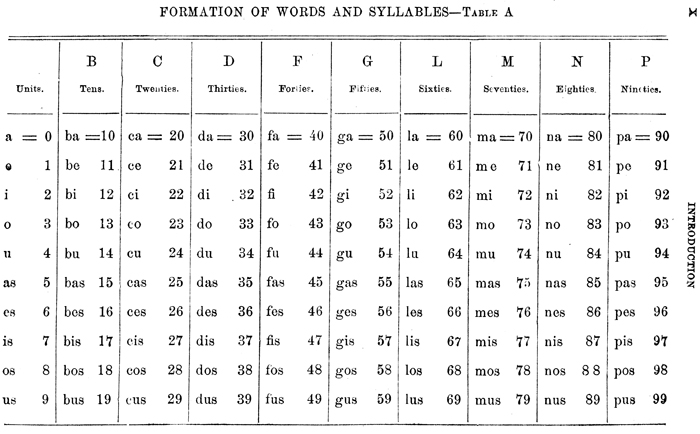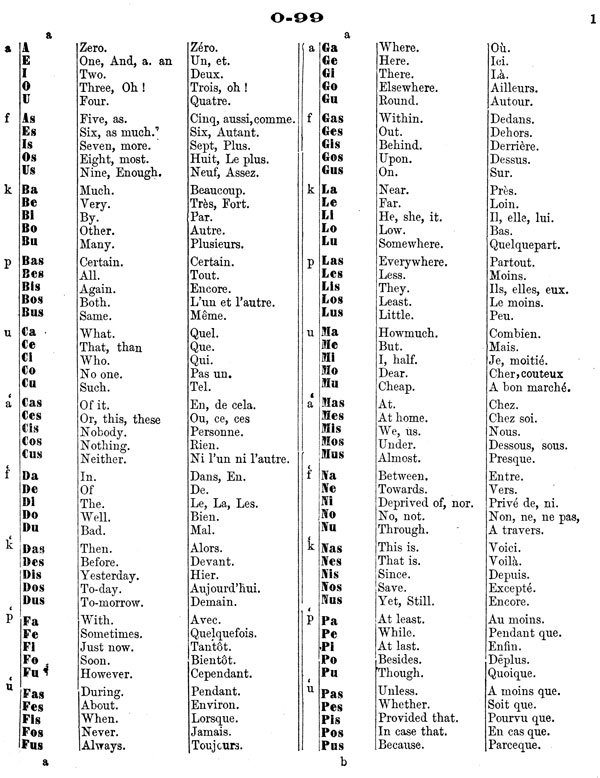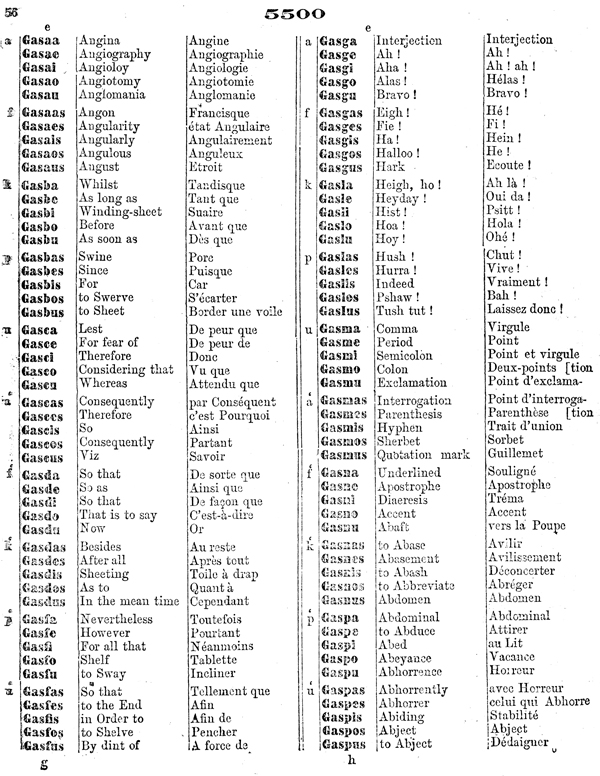telegraphic codes and message practice
scanned code directory
Dictionnaire du langage des nombres
This page is devoted to the telegraphic code of George (sometimes Georges) Boucher de Boucherville (1814-94), Canadian, energetic politician, exile (in Louisiana), (leisured) bureaucrat, author, inventor, and whist fancier.
The code was published in 1889; it was proceeded by a telegraphic patent (1878) and a guide to whist (1887). The dictionary is polyglot (English and French); its full, dual title is:
Dictionnaire du langage des nombres (cesges de damis)
avec une introduction contenant les principes d’une méthode de réduction et l’usage que l’on en peut faire pour abréger les correspondances télégraphiques et autres
and
Dictionary of the numerical language (cesges de damis)
with an introduction containing the principles of a Method of Reduction and the uses to which it may be applied in abridging telegraphic and other correspondence.
1ère éd. / First Edition.
Quebec, Printing Office of C. Darveau
A poor-quality scan of the “microfiche de l’exemplaire de l’édition originale se trouvant à la MacOdrum Library, Carleton University” is available via archive.org —
here.
The volume contains several paginations, as follows:
| i-xxviii | French-language title and introduction. |
| i-xxvii | English-language title and introduction. |
| errata | 1 page, slip? or printed |
| 1-346 | numerical, English, French |
| 1-203 | English, numerical, French |
| 1-285 | French, numerical, English |
Boucher seems to have expended more attention on the arithmetical features than on the phrase content of the code. In the English- and French-first sections, phrases are arranged strictly alphabetically. There is no thesaurus-like grouping of terms, and the phrase vocabulary is largely of single words. Matters get more interesting in the numerical-first section, where phrases are arranged alphabetically (based on English vocabulary), but in sections that yield (interesting) breaks of alphabetical (and potentially semantic) sequence. I am trying to determine if these breaks relate in any way to the constraints of the code words/syllables themselves, and even to the 1878 (Canadian) patent described further below.
Begin with the formation of “words and syllables,” meaning the artificial — and even interlingual — vocabulary.
 |
|
| Table A in English-language introduction, Boucher, Dictionnaire du langage des nombres (1889) from copy in private collection; Carleton Univ scan here |
|
Boucher explains (p ix) —
“For the formation of words, I use the five short vowels a, e, i, o, u, and the five long vowels, as, es, is, os, us, which I combined with the nine consonants b, c, d, f, g, l, m, n, p, in the manner shown in the following table [shown above]. Every word consists of groups of two letters commencing at the left of the word; the last group at the right may have but one letter, which is always a vowel.
Each group represents a syllable.
The first letter of the group is a consonant and represents the tens, the second letter is a vowel and represents the units.
When the word has three or five letters, the last is always a vowel.
The letter “a” represents the cipher. [means what?]
Each group of a number is the syllable of a word. With the following synoptical table, one may easily write in the numerical language any number whatsoever.—Thus 3445, is pronounced 34,45 and written du fas. Thus again 23150 being divided into groups is pronounced 23 15, 0 and written co, ba, a; without however, spacing the groups.”
The “formation” table looks like a standard condenser, where each (pronounceable) letter pair (or unit or even trio in this instance) is assigned a figure ranging from 0 through 99. Except that all is backwards. Ordinarily, condensers are used in conjunction with figure codes, and enable one to turn a figure pair (00 through 99) into a pronounceable cipher syllable. (It is those syllables that are combined to form 10-letter codewords.) Here, the cyphers are the interlingua between English-French phrases, and the numerical language itself.
The numerical language, Boucher’s thinking went, was preferable because (1) it can facilitate intercourse between nations while avoiding “a host of national prejudices” and (2) it was suited to abbreviation via arithmetical procedures (his progressions). (Actually, Boucher makes no direct assertions of this sort. Instead, the rationale for his system is stated, to some degree, in extracts from a letter written by J.C.K. Laflamme (1849-1910, a scientist and influential educator associated with the Université Laval), with which Boucher commences his introduction.)
(A second Table “B” indicates French and English pronunciation of the codewords; although here I am confused, as the table contains letters, e.g, v and z that are not shown in the “formation” table, and that do not appear anywhere in the codewords.)
I am inclined to conclude that the assignation of every English and French vocabulary term, to a codeword (translatable to figure) is completely arbitrary.
 |
|
| first page, “numerical English French” section, Boucher, Dictionnaire du langage des nombres (1889) from copy in private collection; Carleton Univ scan here |
|
Boucher’s grouping yields what are, in effect, cinquains — a five-line form that anticipates the more intentional work of Adelaide Crapsey (1878-1914 *). Absent, at least on the page shown above, is anything like the “physical imagery” that runs through Crapsey’s verse.
 |
|
| Page 56, “numerical English French” section, Boucher, Dictionnaire du langage des nombres (1889) from copy in private collection; Carleton Univ scan here |
|
Page 56 shown above is not typical: it includes interjections and punctuation marks, for example. The order of English phrases appears to rule, although this is not uniformly the case throughout this “numerical English French” section.
George Boucher de Boucherville (1814-94)
patents
- CA 9031 (July 18, 1878) — Mode of Transmitting and Recording Telegraphic Despatches / Mode de transmettre, recevoir et enregistrer les depeches telegraphiques.
no US version.
(downloadable zip files).
This was not available when this page was created (in 2009).
(I have assembled a pdf of the photographed images (better than in scan) from a (now vanished) online exhibit “Made in Canada: Patents of Invention and the Story of Canadian Innovation.”) - US 143,440 (October 7, 1873) — Propulsion of Vessels
Canada “mode of using waves for ship propelling” 2894
minimal description; would convert energy from up and down motion of vessel, moving through waves, to rotary motion to power propeller. illusory? - US 157,065 (November 24, 1874) — Fire-Escapes
Canada 3069 - US 158,363 (January 5, 1875) — Propulsion of Vehicles
sources, etc.
- wikipedia
- (quite interesting) entry at The Canadian Encyclopedia
- André Lemelin, “Boucherville, Georges de” in Dictionary of Canadian Biography (1990); oddly tendentious
- Le Code du whist : Regles, Principles et Exemples (Montreal, 1877) — scan from CIHM/ICMH Microfiche series (of BNC copy) at archive.org.